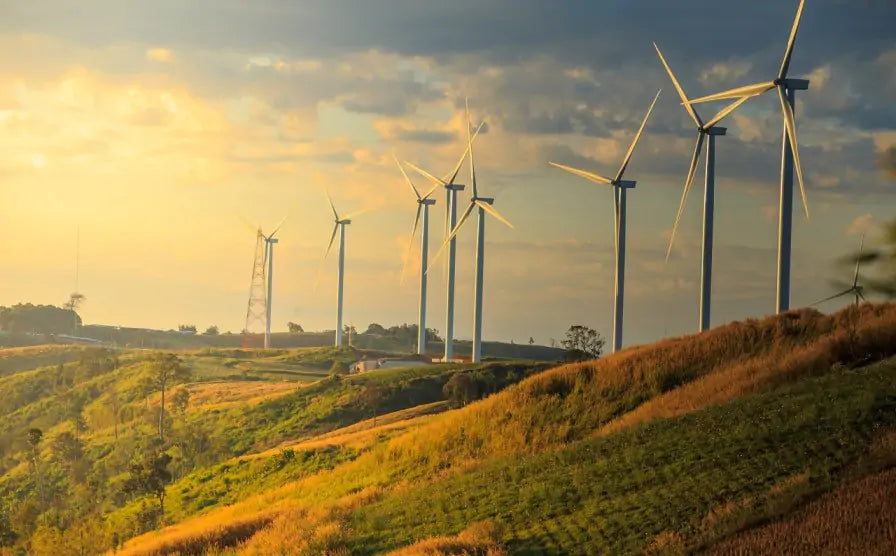Your basket is currently empty.
Shop NowClean Energy Focus: Wind Power

Clean Energy Focus:
Wind power
Wind is generated by movement of air from an area of high pressure to an area of low pressure. The sun heats the earth’s surface unevenly, and when hot air rises, cooler air moves in to replace it.
Wind has been used for centuries as a source of power. Sailors harnessed the power of the wind in their ships’ sails, and farmers used to use windmills to grind up grains and to pump water.
Today, the familiar sight of wind turbines reflects how we are increasingly using wind to generate electricity. Over the past 10 years, 25% more wind turbines have been installed to generate energy.
How does it work?
Most wind energy is generated by turbines that can be as tall as a 20-storey building. They have three 60-metre-long blades. When the wind turns the blades, this turns a shaft which is connected to a generator that produces electricity. Around 40% of the wind energy in Europe is generated in the UK.
The biggest industrial wind turbines generate enough electricity in the course of a year to power around 600 homes. Wind farms can have hundreds of these turbines lined up in known windy locations. Smaller domestic turbines can be stationed in a back yard to produce enough electricity for a home or a business.

Domestic wind turbines
There are two types of domestic wind turbine:
Pole mounted: These are free-standing turbines which are situated in an exposed location.
Building mounted: These are smaller turbines which are mounted on masts and installed on the roof of homes where there is enough wind to generate power.
The benefits of having a domestic turbine
It will cut your electricity bills
Wind doesn’t cost anything, so once you’ve paid for the initial installation of the turbine, your electricity bills will be reduced.
You can get paid for the electricity you generate.
You can export the energy you don’t use to the national grid and get paid for it.
You can cut your carbon footprint
Wind energy is green, renewable energy that doesn't release any harmful carbon dioxide or other pollutants.
You can store electricity for calmer days
If your home isn't connected to the national grid you can store any excess electricity in batteries and use it when there is no wind.
How much does a wind turbine cost?
The cost of a wind turbine depends on the size of it and the mounting method. Building-mounted turbines cost less to install than pole-mounted ones, but they are generally less efficient.
- a roof-mounted wind turbine system can cost up to £3,000
- a pole-mounted system costs between £9,900 and £19,000
Wind turbine maintenance
Maintenance checks are needed every few years, and they will generally cost £100 to £200 per year depending on the turbine size. A wind turbine should last more than 20 years if it’s well-maintained, but systems that aren’t connected to the national grid will have batteries that need replacing roughly every 6-10 years, and you will have to consider the costs of fuel and maintenance for a back-up generator.

The future of wind energy
Wind is a clean, renewable energy that creates no air or water pollution. Wind costs nothing, and advances in technology are slowly but surely making wind turbines cheaper.
Of course, there are always going to be disadvantages. People generally complain that wind turbines are a blot on the landscape and they can be noisy. The blades can kill birds, but in comparison with cars and power lines, they don’t kill many. And of course, the wind is not guaranteed. On a calm day, negligible amounts of energy will be generated.
However, the wind energy industry continues to grow. Global efforts to tackle climate change have seen huge investments being made in renewable energy, including wind energy.
China now installs more wind turbines than the EU and now is a world leader with its efforts to combat the effects of using fossil fuels to produce energy.
Experts predict that by 2050, around 1/3 of the world’s electricity will be generated by wind power.






